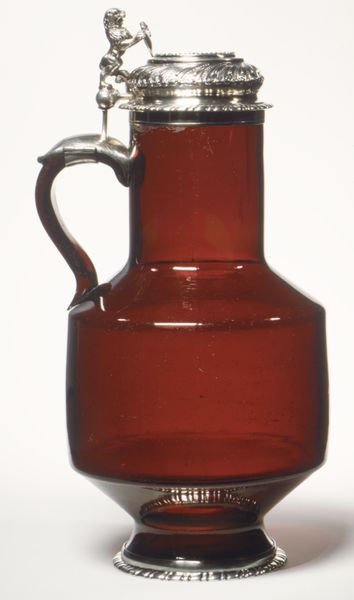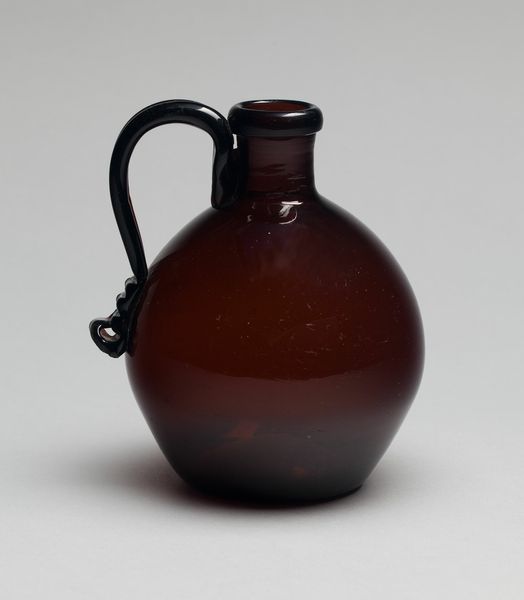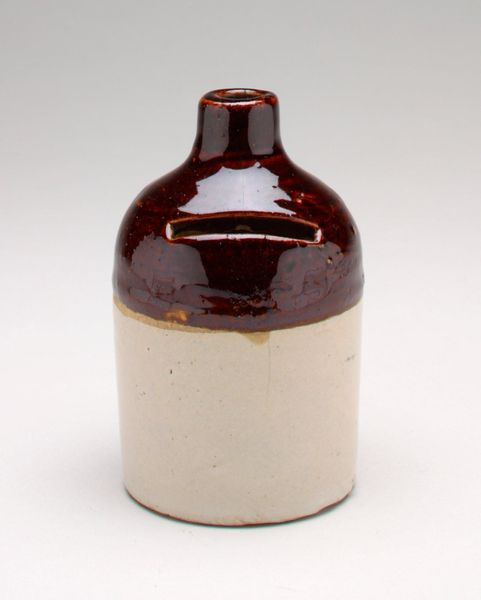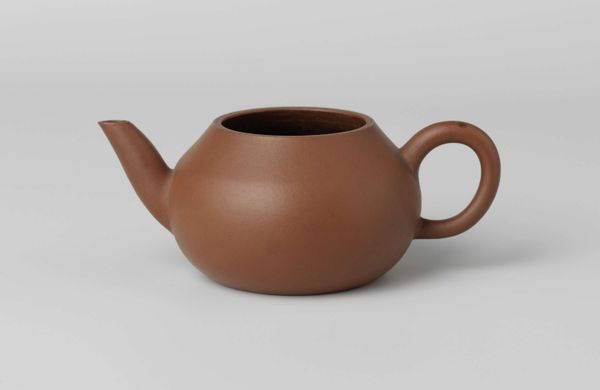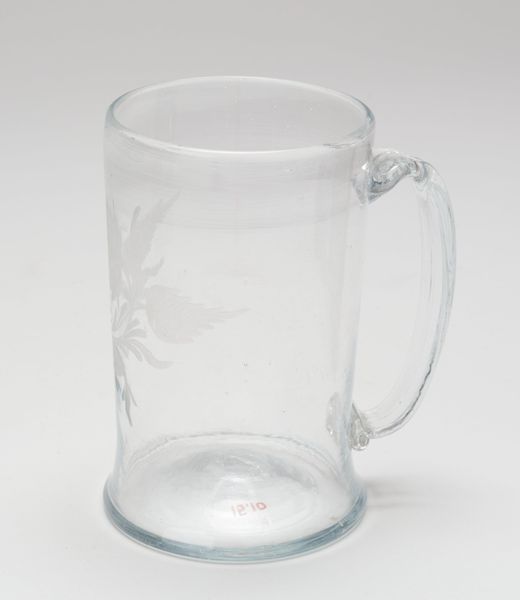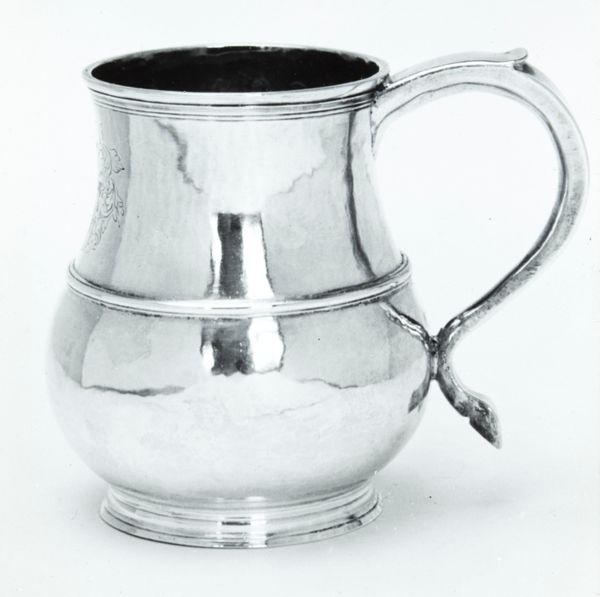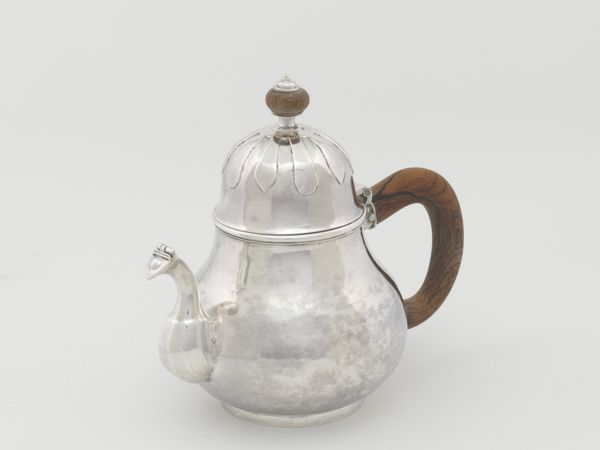
photography
#
art-deco
#
photography
#
geometric
Dimensions: 7 1/2 x 6 3/4 x 5 1/4in. (19 x 17.1 x 13.3cm)
Copyright: No Known Copyright
This Thermos pitcher was designed by Henry Dreyfuss, but when exactly is unknown. The object is a symbol of modernity and streamlining, but also evokes primitive forms. The pitcher's rounded body echoes ancient vessels, containers of sustenance, and life. This form carries echoes of ancient amphorae used to store wine or oil, essentials of life across cultures. Note the handle: it's a stylized arch. This form is also charged with symbolic power. It is reminiscent of gateways, portals, and triumphs. The arch is deeply embedded in our collective memory, appearing in Roman triumphal arches and Gothic cathedrals. The object's streamlined form, however, also signifies progress, speed, and the future, turning backward to move forwards. Consider the emotional pull it exerts; the longing for both the primal security of ancient forms and the exciting promise of progress. It's a powerful blend of tradition and innovation, constantly reshaping our desires and memories.
Comments
minneapolisinstituteofart almost 2 years ago
⋮
Henry Dreyfuss was perhaps the most understated of the early industrial designers. Like his teacher and main inspiration Norman Bel Geddes, he moved from theater design to industrial design, but took a more practical approach, developing long relationships with clients such as the Hoover company, John Deere, and the New York Central Railroad. Dreyfuss preferred the word "cleanlining" to "streamlining," which distanced him from what he considered to be the excesses of the 1930s restyling movement. He was sufficiently self-promotional to write his own autobiography, Designing for People, in 1955, following in the footsteps of Bel Geddes, Teague, and Loewy. These pitchers are typical of his approach to industrial design, with synthetic materials and clean lines. The American Thermos Bottle Company promoted them with Dreyfuss's name, which appears in signature form on the bottom.
Join the conversation
Join millions of artists and users on Artera today and experience the ultimate creative platform.
